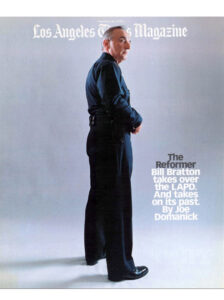
 Los Angeles Times Magazine
Los Angeles Times Magazine
January 19, 2003
By: Susan Heeger
Photographed by: Dave Lauridsen
It’s not hard to overdo a garden. “Too many things going on in a small area produces a restless quality which will leave the on-looker dissatisfied,” wrote landscape architect Thomas Church in his classic 1955 book, “Gardens Are for People.” A preeminent gardener of mid-century California, Church presented an alternative to over-kill, what he called “a green oasis.” The new garden was understated and intended to complement a small-scale, postwar house whose function spilled outdoors and whose busy owners wanted to go out and enjoy it, not slave to keep it up. Like the gardens pictured on these pages-designed recently for mid-century Southern California homes-Church’s gardens were low-key and low-maintenance. Rather than featuring a slew of plants, they showcased only a few.
Simplicity was one of Church’s fundamentals. “Landscaping is not a complex and difficult art to be practiced only by high priests,” he wrote. This approach works even if your architecture is more elaborate. Before you hit the nursery, ask yourself, what’s the point of the space you’re shaping? Is it for sitting or strolling? Is it a view garden for a room or a setting for a pool? When it comes to plans, keep it simple. Play with contrasting tones and textures, but if you want peace, don’t clutter. Remember Church’s oasis, where “fewer and simpler lines” create a fest for the eye and a clear connection to the house. Three Los Angeles landscape designers follow Church’s lead.
Two and a half years ago, set decorator and designer Lauri Gaffin bought and renovated her first house, a 1951 structure built by modernist A. Quincy Jones. Perched in a Brentwood canyon, it had a distant, woodsy view, but up close it faced dirt and cracked cement. The living room features floor-to-ceiling glass with the sliding doors and an airy porch, so Gaffin wanted a terrace that would enhance the in-door-outdoor feel. “I imagined walking out to a quiet place to just relax,” she says, “and I wanted to look out and see a painting. I didn’t have a lot to spend and I’m very busy, but I needed entertaining space and peaceful plantings that wouldn’t take much tending.”
The designers she hired, Jay Griffith and Russ Cletta of Venice-based Griffith and Cletta, let the house dictate the garden’s forms, repeating its horizontal lines in practical concrete carpets that maximize the usable space. They planted the terrace with soft, silvery greens including lavender, heli-chrysum and grasses. “Lauri and I went to the nursery and chose lots of plants,” Cletta says. “but we narrowed the palette to just a few. If the garden were too busy, it would detract from the strength and drama of the building.”
To add elements of richness, he and Griffith planted the seams of the concrete paving with succulent sedums. Beside a space Gaffin uses for outdoor dining, they introduced a single round pot of burgundy Aeoniums and repeated the color in the cushions of her benches. They also used similar plants, leaf shapes and foliage tones in other beds around the house to link the garden spots and tie the house more firmly to its setting.
Gaffin says the garden’s maintenance is “mostly light pruning, cutting back the Helichrysum and, once a year, the grasses. I don’t do much except enjoy it. I watch the leaves flutter, I hear them rustle. It makes me feel alive.”